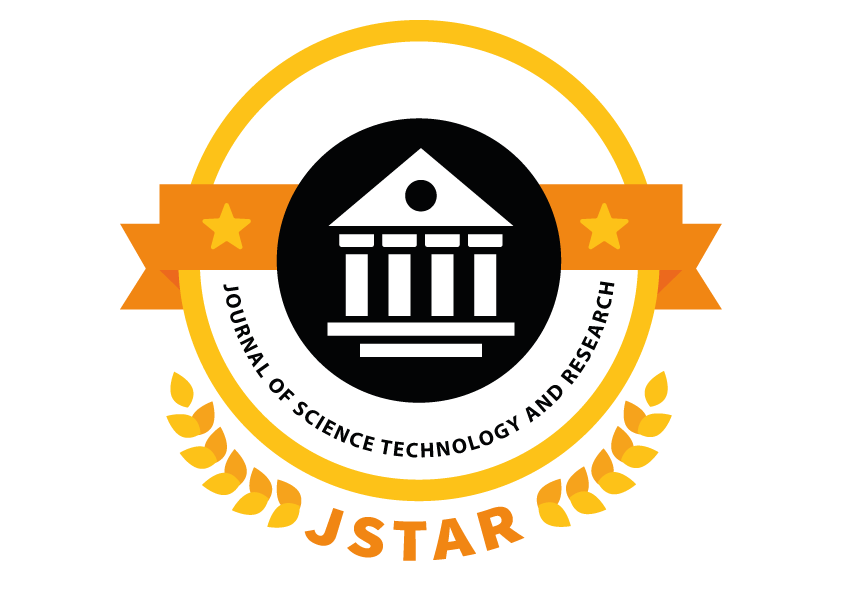Author:
Sudhin Chandran, M.Abhijith, PriyaPublished in
Journal of Science Technology and Research( Volume , Issue )
1. M. Armbrust, A. Fox, R. Griffith, A. D. Joseph et al., “A view of cloud computing,” Communications of the ACM, vol. 53, no. 4, pp. 50–58, 2010.
2. C. Wang, Q. Wang, K. Ren, N. Cao, and W. Lou, “Toward secure and dependable storage services in cloud computing,” IEEE Transactions on Services Computing, vol. 5, no. 2, pp. 220–232, 2012.
3. K. Xue and P. Hong, “A dynamic secure group sharing framework in public cloud computing,” IEEE Transactions on Cloud Computing, vol. 2, no. 4, pp. 459–470, 2014.
4. J. W. Rittinghouse and J. F. Ransome, Cloud computing: implementation, management, and security. CRC press, 2016.
5. D. Zissis and D. Lekkas, “Addressing cloud computing security issues,” Future Generation Computer Systems, vol. 28, no. 3, pp. 583–592, 2012.
6. H. T. Dinh, C. Lee, D. Niyato, and P. Wang, “A survey of mobile cloud computing: architecture, applications, and approaches,” Wireless Communications and Mobile Computing, vol. 13, no. 18, pp. 1587–1611, 2013.
7. R. A. Popa, C. Redfield, N. Zeldovich, and H. Balakrishnan, “CryptDB: protecting confidentiality with encrypted query processing,” in Proceedings of the 23rd ACM Symposium on Operating Systems Principles. ACM, 2011, pp. 85–100.
8. C. Curino, E. P. Jones, R. A. Popa, N. Malviya et al., “Relational cloud: A database-as-a-service for the cloud,” 2011, http://hdl.handle.net/1721. 1/62241.
9. D. Boneh, D. Gupta, I. Mironov, and A. Sahai, “Hosting services on an untrusted cloud,” in Advances in Cryptology-EUROCRYPT 2015. Springer, 2015, pp. 404–436.
10. X. Chen, J. Li, J. Weng, J. Ma, and W. Lou, “Verifiable computation over large database with incremental updates,” IEEE Transactions on Computers, vol. 65, no. 10, pp. 3184–3195, 2016.
11. X. Chen, J. Li, X. Huang, J. Ma, and W. Lou, “New publicly verifiable databases with efficient updates,” IEEE Transactions on Dependable and Secure Computing, vol. 12, no. 5, pp. 546–556, 2015.
12. S. Benabbas, R. Gennaro, and Y. Vahlis, “Verifiable delegation of computation over large datasets,” in Annual Cryptology Conference. Springer, 2011, pp. 111–131.
13. W. Li, K. Xue, Y. Xue, and J. Hong, “TMACS: A robust and verifiable threshold multi-authority access control system in public cloud storage,” IEEE Transactions on Parallel & Distributed Systems, vol. 27, no. 5, pp. 1484–1496, 2016.
14. K. Xue, Y. Xue, J. Hong, W. Li, H. Yue, D. S. Wei, and P. Hong, “RAAC: Robust and auditable access control with multiple attribute authorities for public cloud storage,” IEEE Transactions on Information Forensics and Security, vol. 12, no. 4, pp. 953–967, 2017.
ABSTRACT:
The STC database for SQL Range Queries digital apps with Privacy Preserving addresses the challenge of protecting sensitive data outsourced to the cloud. In modern applications, users frequently rely on SQL range queries (such as “<”, “>”) for accessing critical data. However, many existing secure database solutions leak private information, including access patterns and statistical properties, to cloud servers. This project proposes a novel two-cloud architecture to overcome this limitation. The system splits sensitive data between two non-colluding cloud providers, ensuring no single provider can reconstruct the entire dataset. Additionally, it introduces secure intersection protocols to enable efficient numeric SQL range queries while preserving privacy. This structure significantly reduces the risk of unauthorized data inference. Unlike previous methods such as Order-Preserving Encryption (OPE), which leak data order and patterns, our architecture provides enhanced privacy guarantees. This approach makes STC database for SQL Range Queries digital apps with Privacy Preserving ideal for secure, scalable cloud-based applications.
INTRODUCTION:
Cloud computing offers affordable and scalable storage for databases, but it also introduces privacy concerns. The STC database for SQL Range aims to address this issue by preventing sensitive data exposure during range-based queries. Most cloud providers are honest-but-curious—they follow protocols but attempt to infer private information. Conventional methods like OPE allow range queries over encrypted data but leak order and access patterns. To solve this, we propose dividing sensitive data into two parts, each hosted on separate non-colluding clouds. This dual-cloud design ensures privacy preservation even during frequent user queries. Additionally, secure intersection protocols facilitate efficient SQL range operations without revealing query logic or data structure. The system supports standard SQL operations such as SELECT and UPDATE, enabling real-world functionality with robust privacy controls. Overall, STC database for SQL Range offers a practical solution for privacy-aware database outsourcing in modern cloud environments.

